Scone Palace – Scottish Royalty Coronation Site
This the fourteenth post reporting on the inaugural Medieval Britain tour by Canadian military specialists Liberation Tours. In the last post we celebrated crossing over to Scotland by stopping for a wee dram at Carter Bar and then moved on the the wonderful ruins of Melrose Abbey. We had a day off in Edinburgh and most of the group checked out Edinburgh Castle, but Alison, I and my sister Anne opted for the Scottish National Portrait Gallery and we were not disappointed. Now we are speeding across the amazing new Firth of Forth bridge with a view of the original cantilever bridge that is a UNESCO World Heritage Site. Our destination is Scone Palace where we will find out why this place is so integral to Scottish history. I hope you’ll join us.
Scone is just north of the city of Perth, less than fifty miles (80 kms.) from Edinburgh and we arrive at Scone Palace gates on a glorious Scottish summer morning which is sunny and warm. Contrary to popular myth, it doesn’t rain all summer in Scotland and the weather has been exceptionally nice. Before heading directly to the palace, our tour leader Phil Craig guides us to a replica of the Stone of Scone or the Stone of Destiny as the Scots prefer to call it.
The Stone of Destiny
This is Phil with the handful of notes he has prepared for this dissertation on Scone and the Stone of Destiny. When he’s not leading tours, Phil is a professional actor and he puts this skill to good use every day on this tour, using the notes he has prepared from his own research to bring the places we visit alive in away that most guides just cannot do. For me, listening to Phil’s ‘lectures’ for lack of a better word is one of the highlights of the trip.
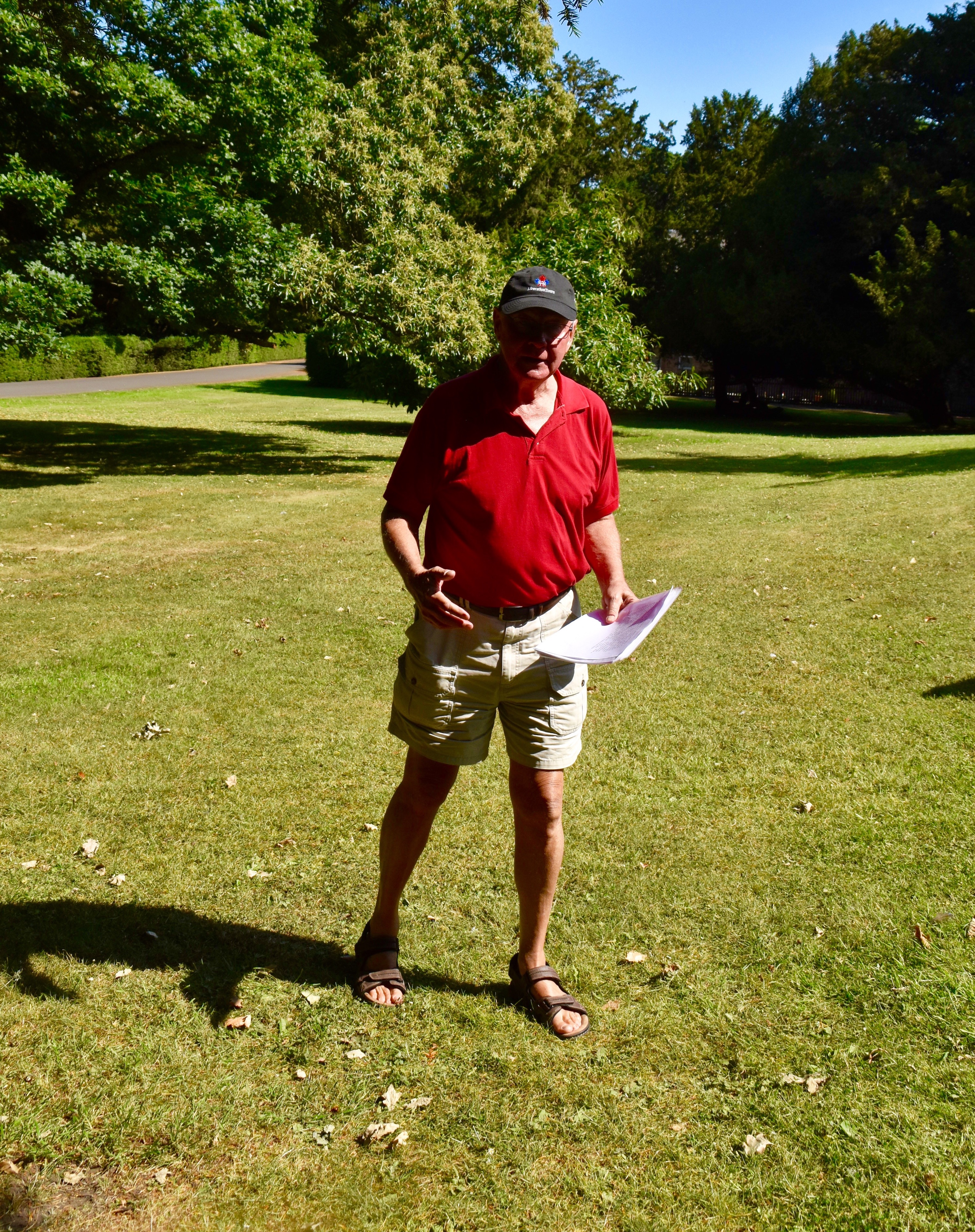
The history of the Stone of Destiny is shrouded in myth, Scottish nationalism and outright absurdity. The absurdity is that the stone is alleged to be the pillow that Jacob rested his head upon as he dreamt of Jacob’s Ladder. Last time I slept in the woods and needed a pillow I used a combination of ferns and conifer branches. The last thing you’d use as a pillow is a bloody rock. With regards to the myth part, that involves the legend that it was brought to Scone from the sacred hill of Tara in Ireland by the Picts sometime around the 8th or 9th century. Only problem is that geologists have almost definitively proved that the stone is red sandstone quarried not far from Scone, so it doesn’t quite have the traveling pedigree that is often ascribed to it.
Getting to the Scottish nationalism, it can be said with some certainty from the time of Kenneth McAlpin, generally recognized as the first true Scottish king, until the stone was stolen by Edward I of England, that every Scottish king was coronated by sitting on this rock. That includes Robert the Bruce and MacBeth. In 1296 Edward captured the Stone of Destiny and removed it to Westminster Abbey where it remained for exactly 700 years. I distinctly remember seeing it there as a teenager. The English were not ones to fool with destiny or with Jacob for that matter, so they took no chances and every monarch from Edward II to Queen Elizabeth II has had the Stone of Destiny underneath the Coronation Chair ever since.
In 1996, the English finally caved to pressure and retuned the damn stone to the Scots, but it didn’t return to Scone, but rather Edinburgh Castle where it’s rather underwhelmingly displayed in the same room as the Scottish Crown jewels. The only condition was that it be returned for the coronation of the next British monarch whoever that might be given QEII’s penchant for living.
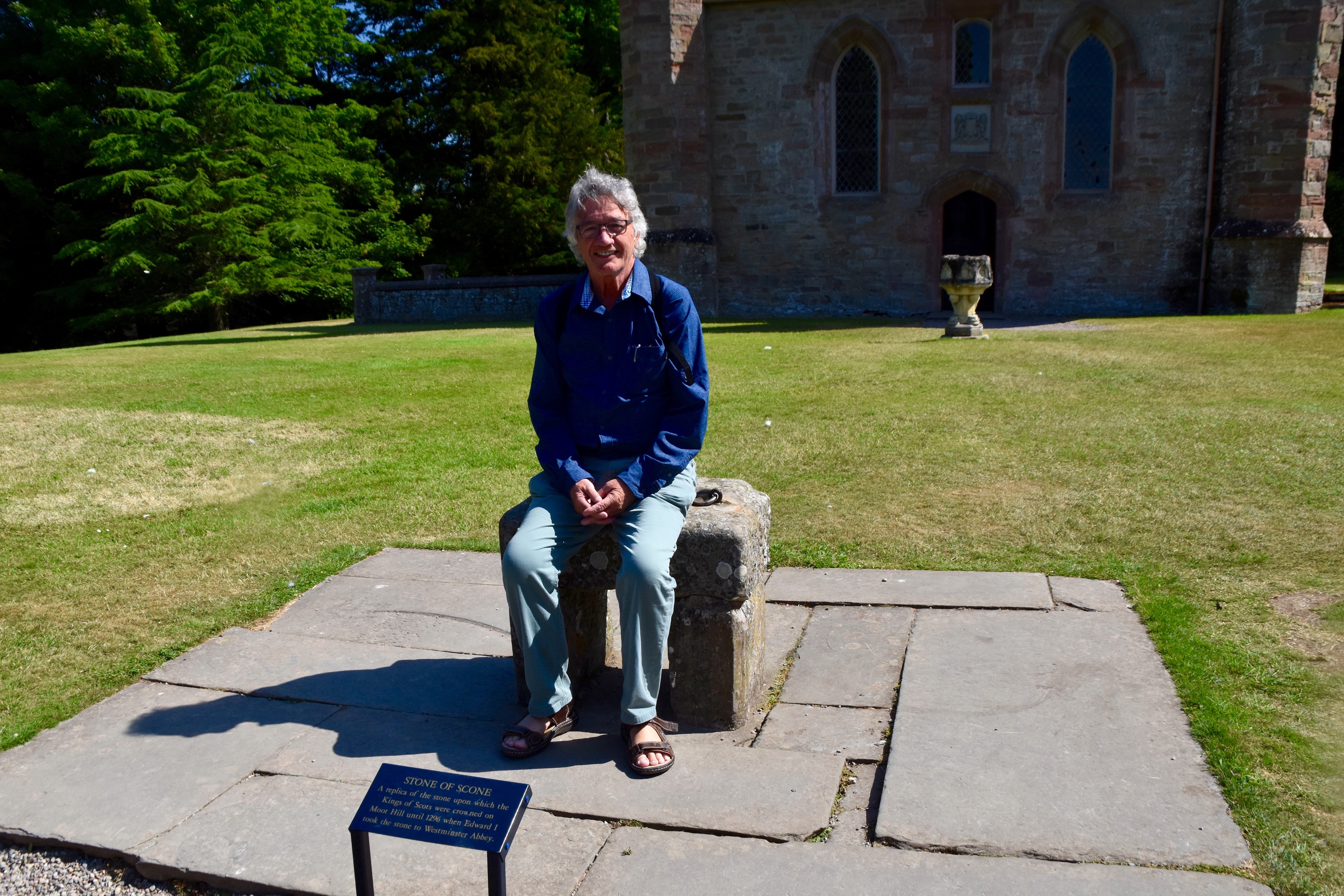
So what I am sitting on is a replica, but when you consider who did sit here with the real Stone of Destiny, it’s pretty neat. Do I look very regal? And is this stone the inspiration for that dreadfully dry pastry of the same name?
After a bit of tomfoolery, it’s time to head for Scone Palace.
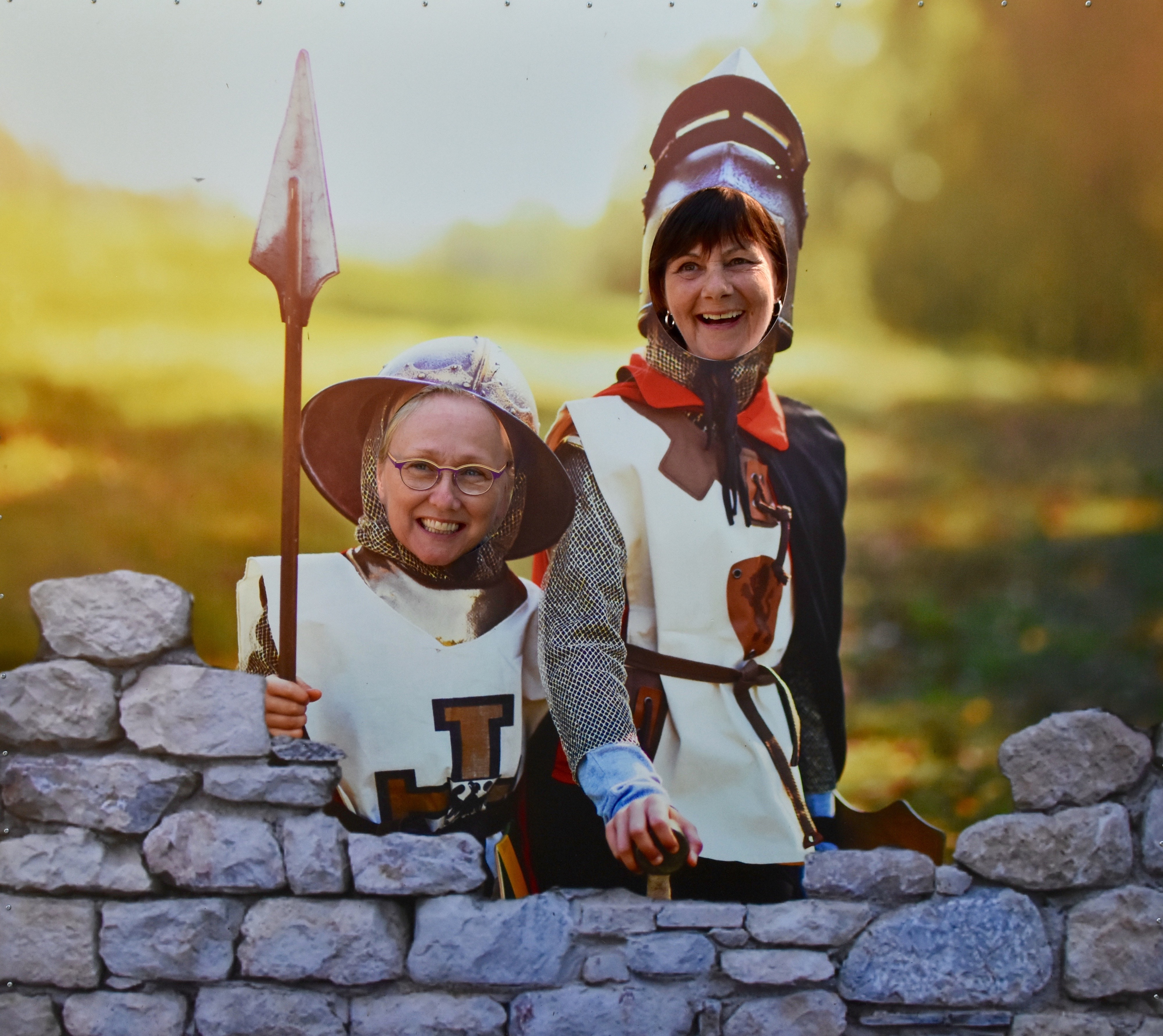
Scone Palace
Scone Palace has antecedents that date all the way back to the 12th century when it was first a church, then an Augustinian priory and finally a full fledged abbey. Now an abbott must needs have a palace which was constructed during the late medieval period and all subsequent renditions have been referred to as ‘palaces’. In 1559, that foaming at the mouth Presbyterian lunatic John Knox led an attack on the abbey which pretty well finished it as a religious institution. Since then it has been a private residence and since 1776 home of the Earls of Mansfield, the title being created in that year for the great Scottish lawyer and judge William Murray, aka Lord Mansfield who held the positions of Chief Justice, Speaker of the House, Chancellor of the Exchequer, Attorney-General and Solicitor General.
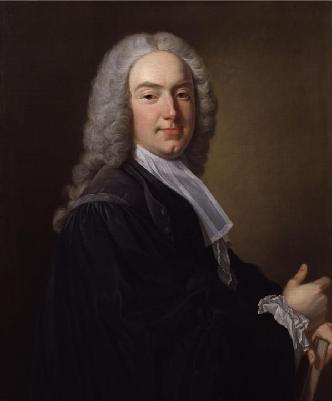
As a first year law student I studied a number of cases decided by Lord Mansfield that remain the law today. Perhaps his most famous was Somerset’s Case which held that slavery had no basis in common law and that one man had no right to ever own another. This was in 1772, long before the abolition movement was a force. At the end of the tour I bought a fridge magnet with one of his most famous sayings on it – “Let justice be done though the heavens may fall.”. So Scone Palace was once the home of a legal superstar and that gives it added meaning for me, Alison and Rob, the lawyers on this trip.
The building we are visiting today dates primarily from the early 19th century when the 3rd Earl of Mansfield commissioned William Atkinson, a specialist in Gothic Revival to expand and modernize the older palace. I think he did a pretty good job.
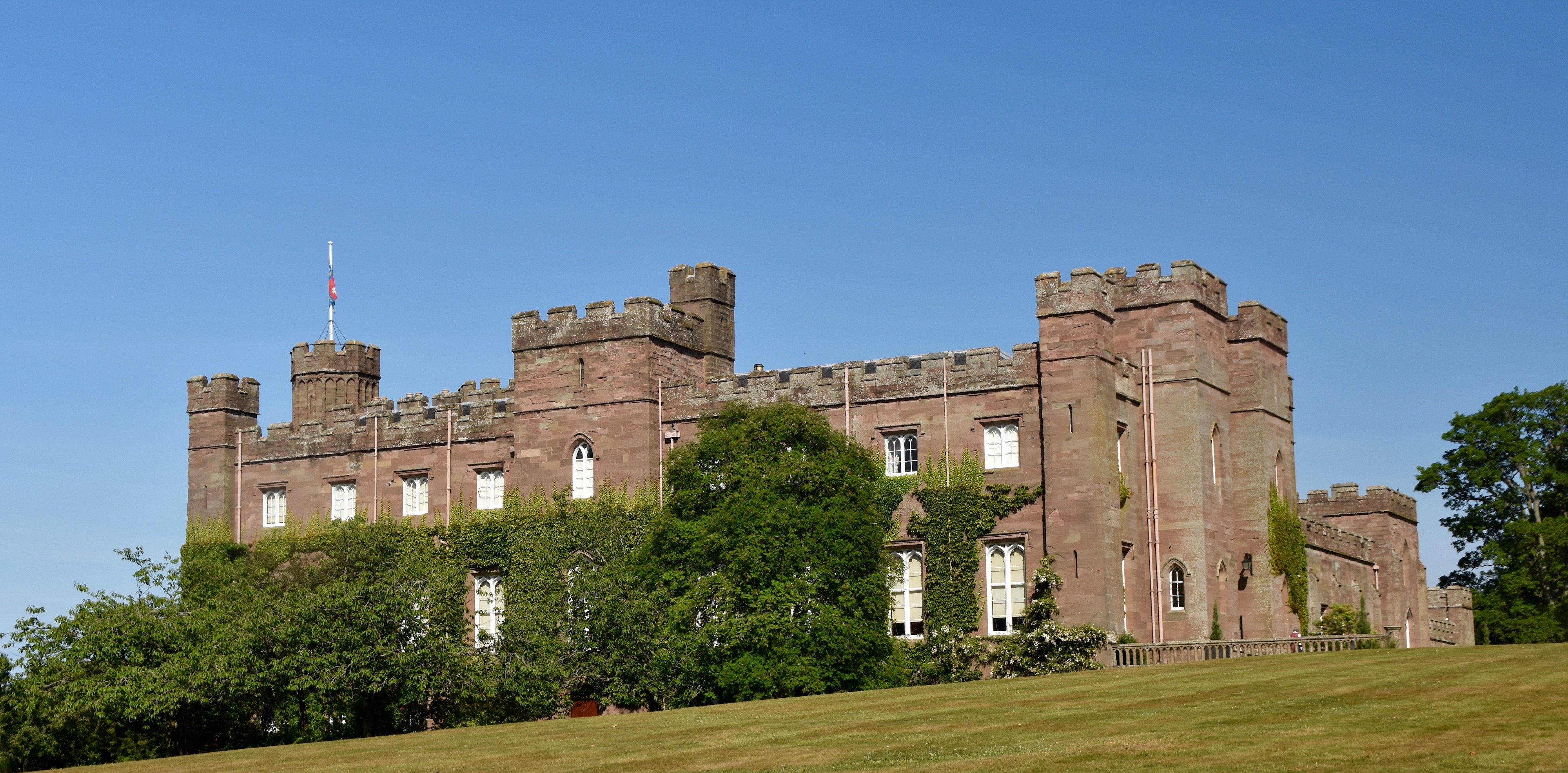
Our group was warmly met at the entrance by a lady who gave us a briefing on the history of Scone Palace and explained that we were free to tour on our own. Each major room had its own guide on duty who, upon questioning, seemed to know every detail of every piece of furniture, painting and adornment in that room. In describing the interior of Scone Palace the word that comes most readily to mind is ‘opulent’, but not in any way in a pejorative sense. This is luxury on a grand scale, but well within the bounds of good taste, sort of the very opposite of how the Trump family would inhabit a place like this.
Scone Palace does not allow interior photography, even without a flash, but they were kind enough to let me use these professional photographs to give the reader a better idea of what you will see on a visit.
This is the inner hall, complete with two bears and some amazing Japanned furniture.
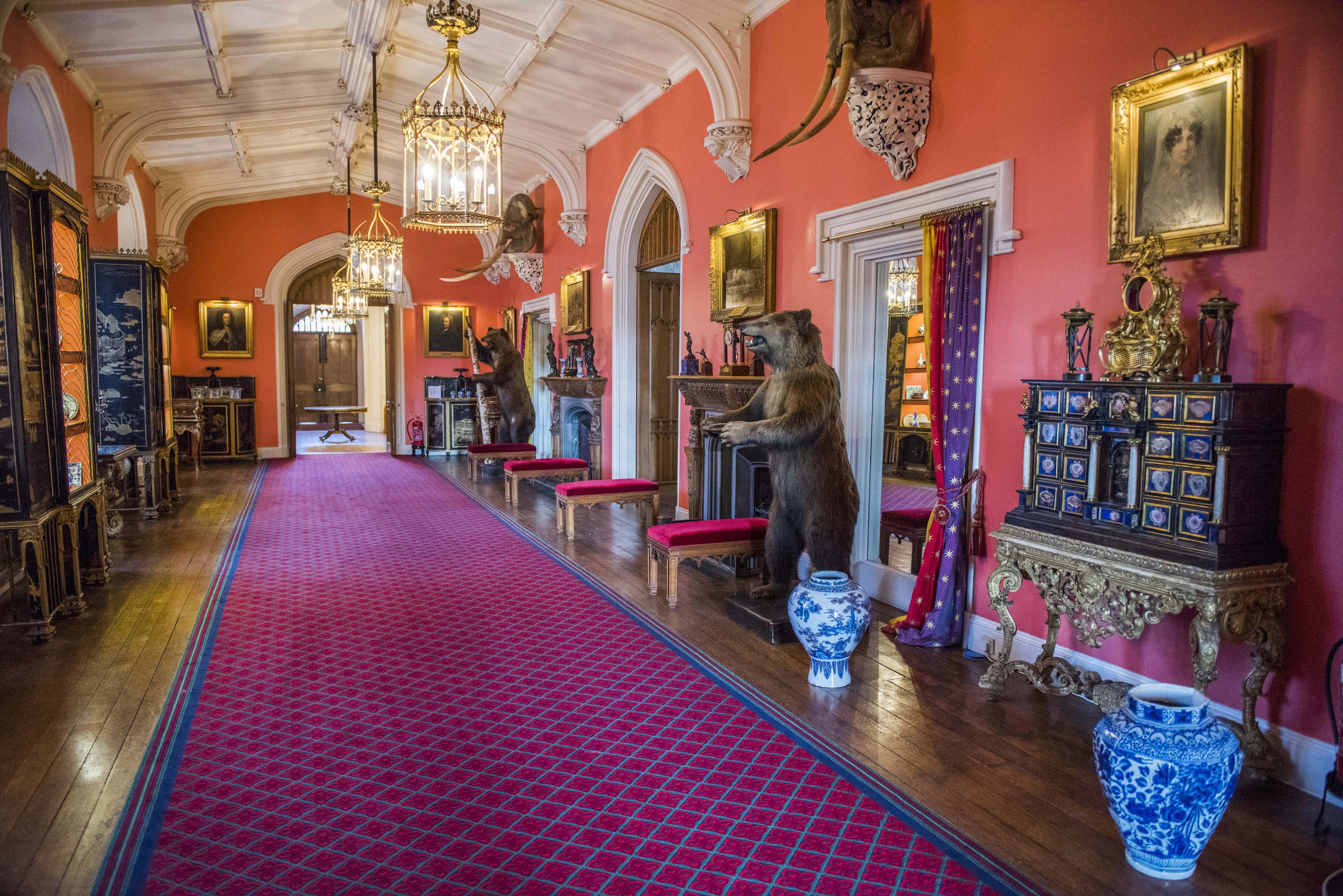
This the drawing room
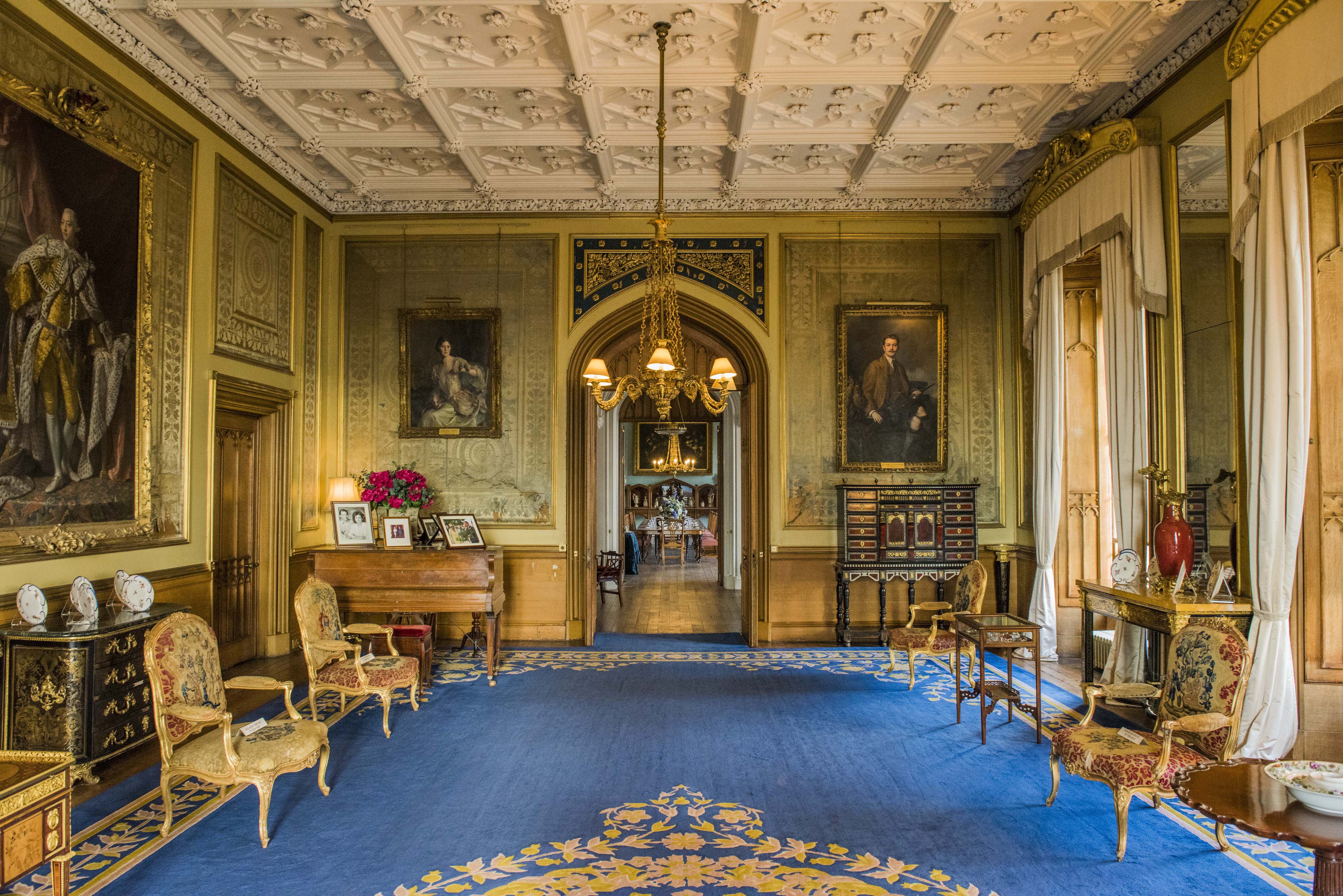
And perhaps the most magnificent room in Scone Palace and certainly one of the best we saw on our entire trip, the Long Gallery.
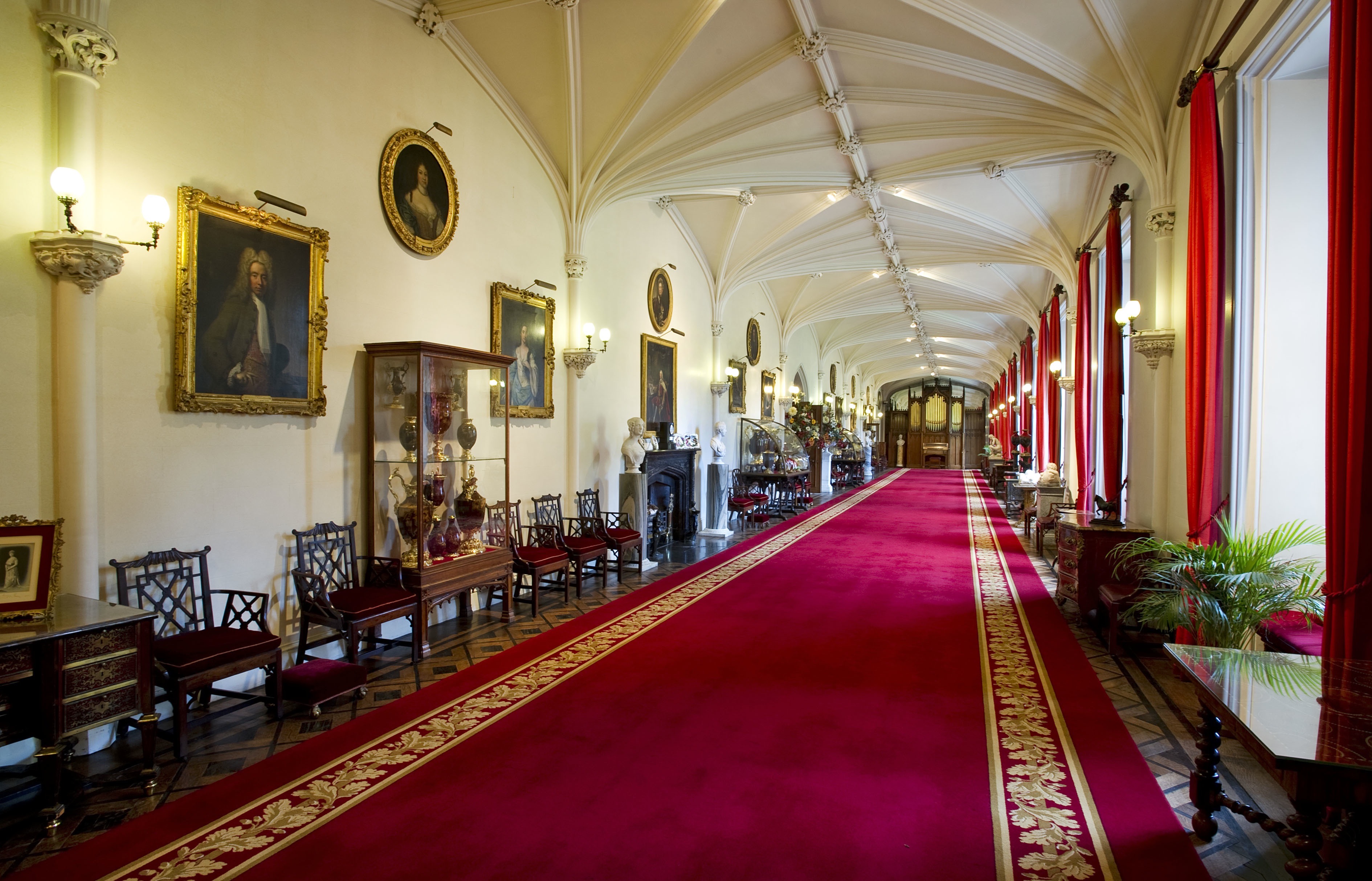
Pretty nice, eh?
After touring the palace we were escorted to the restaurant where this sign was waiting for us.
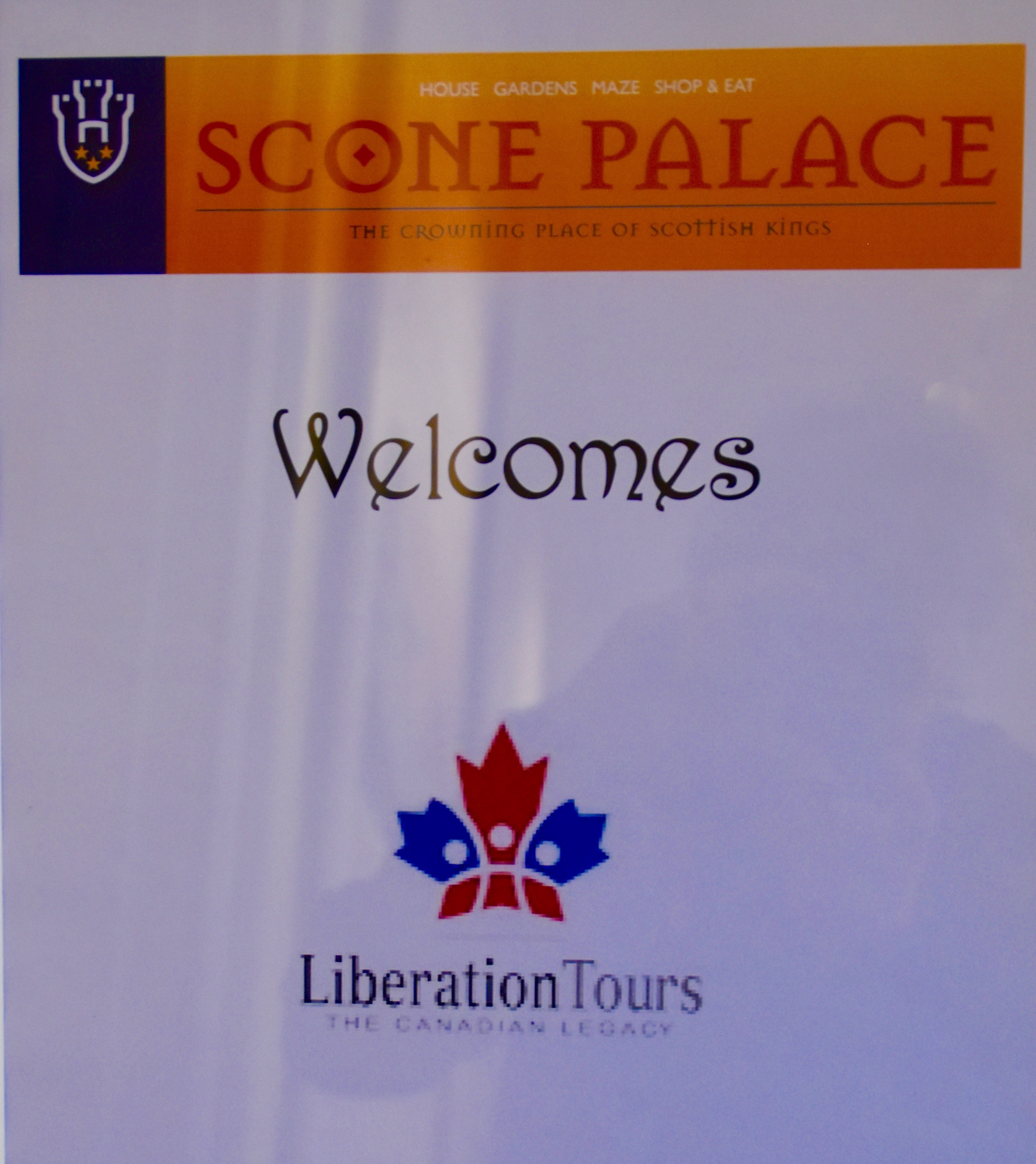
One of the nicest things about Liberation Tours is that they always try to arrange group lunches or dinners in special locations.
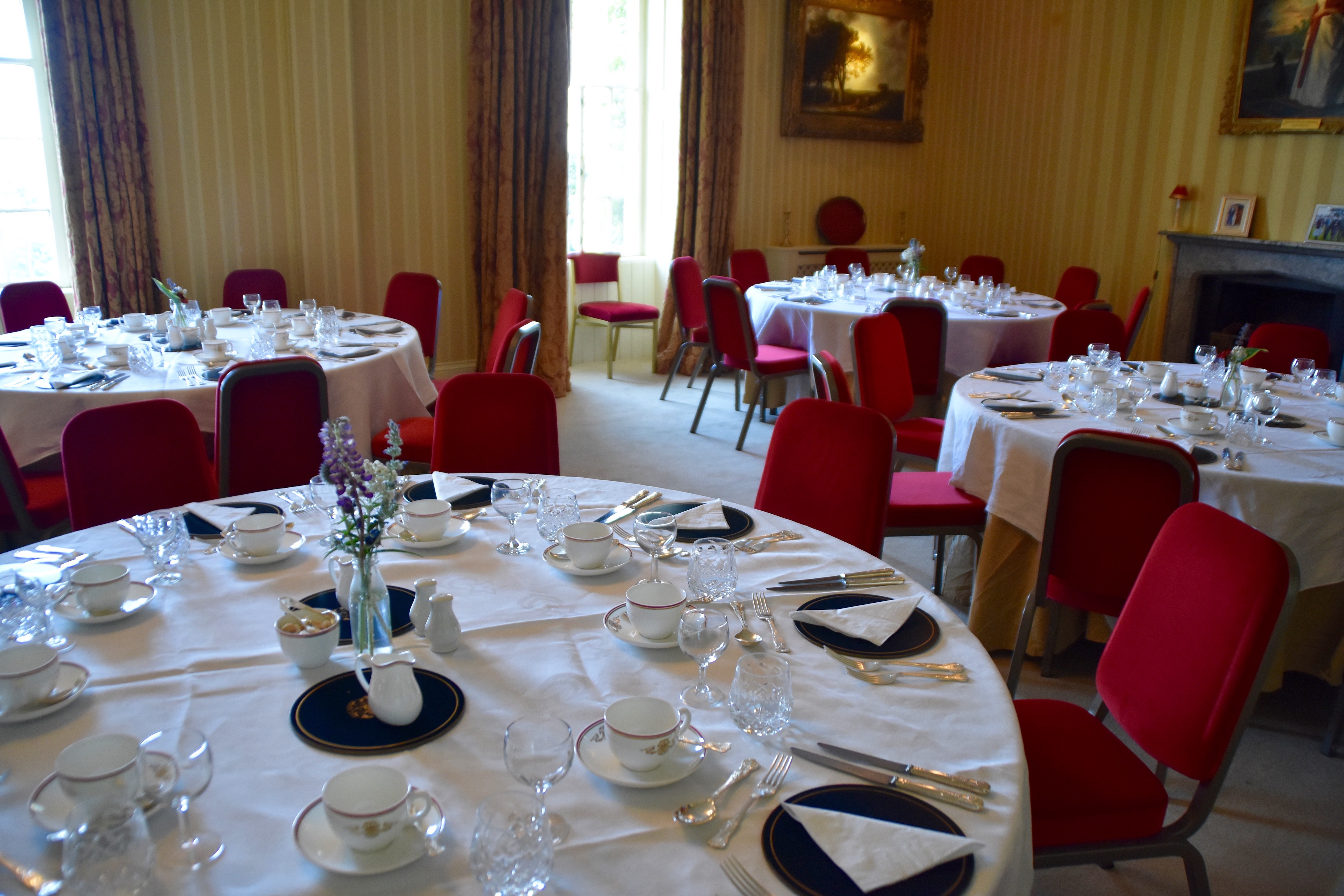
I usually forget what I’ve chosen so the food is almost always a pleasant surprise like this entree served on Scone Palace china.
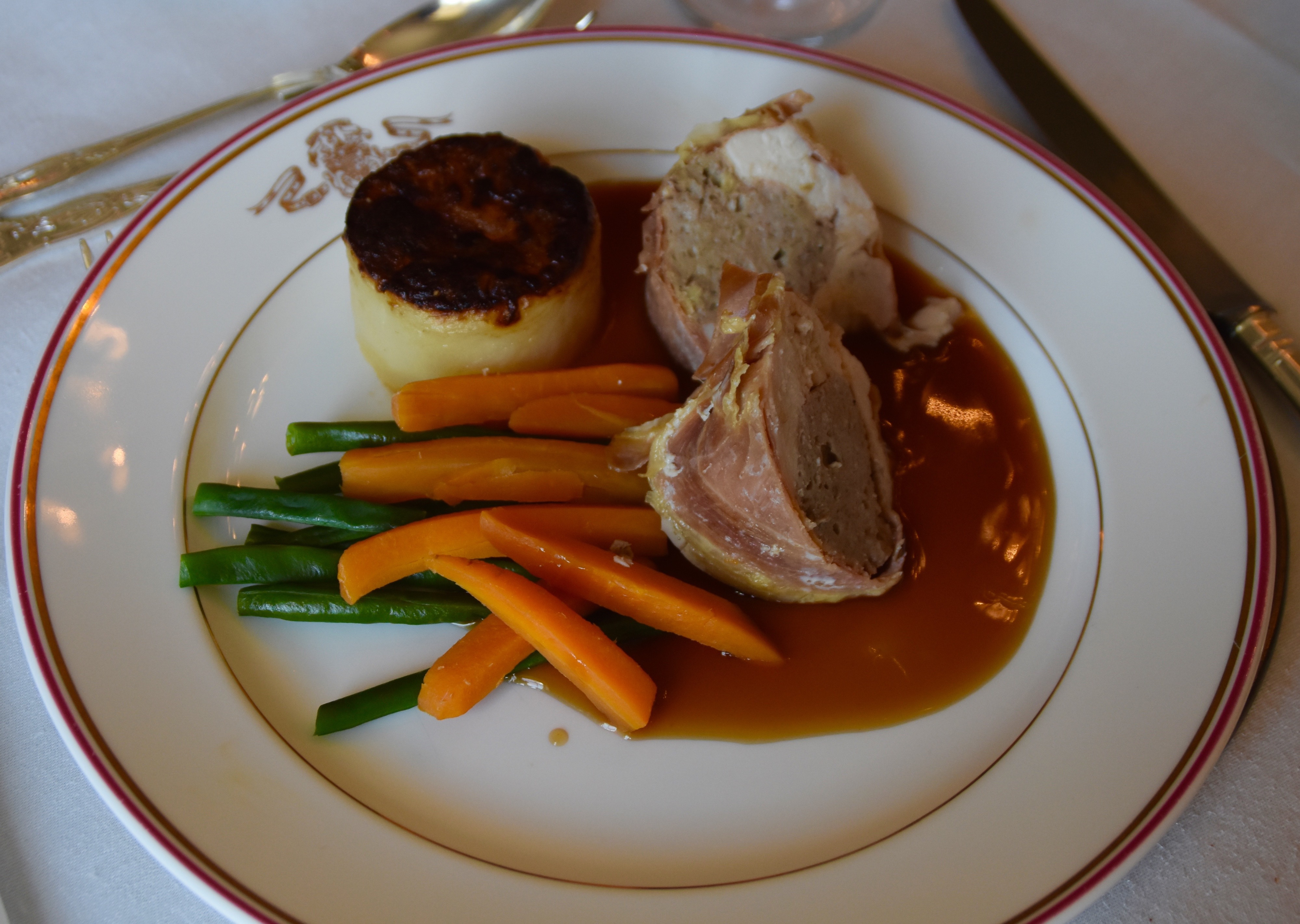
After lunch we headed back to the bus, our appetites sated and our minds as well, with all we had learned about the place the Scots call Scone.

